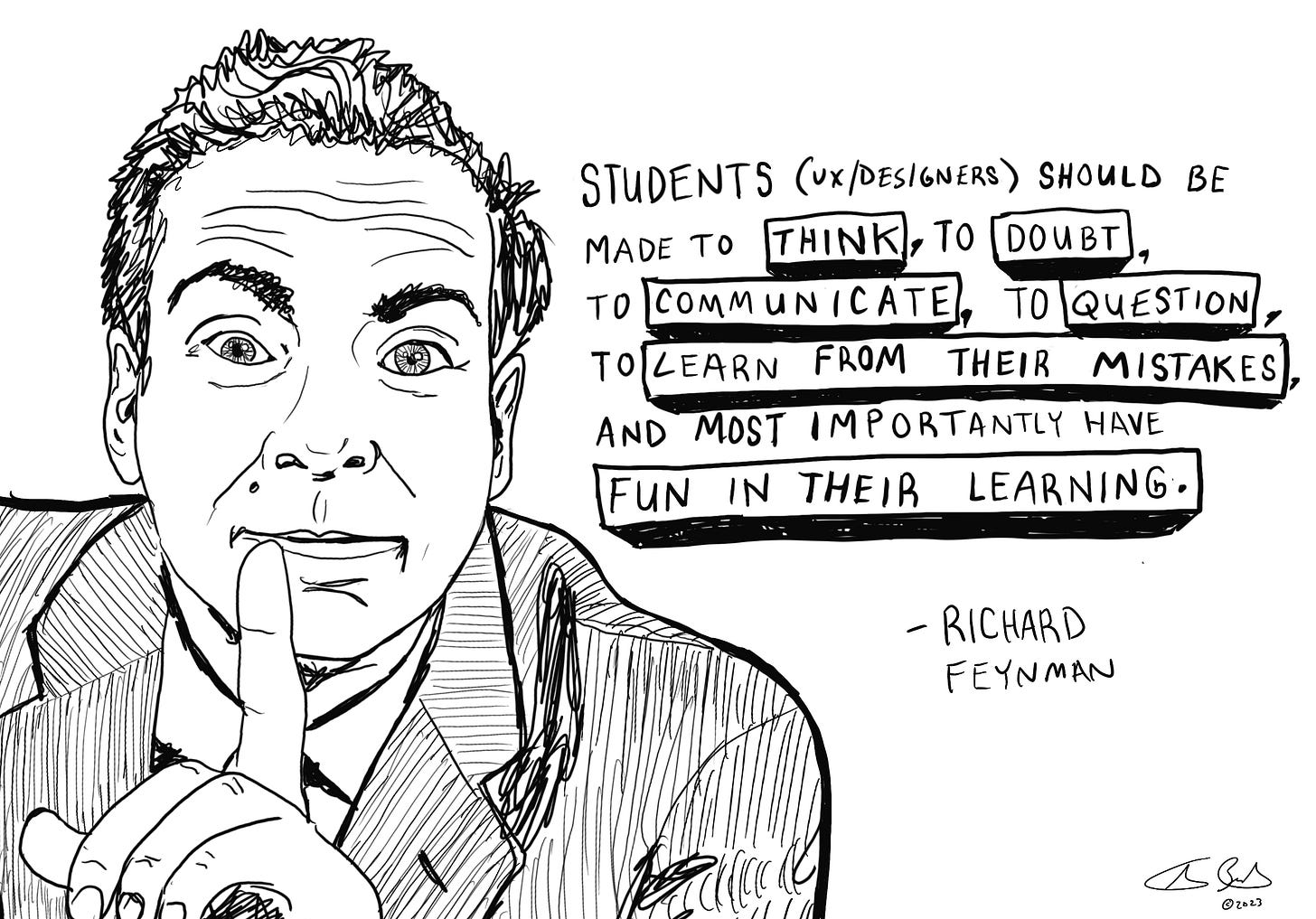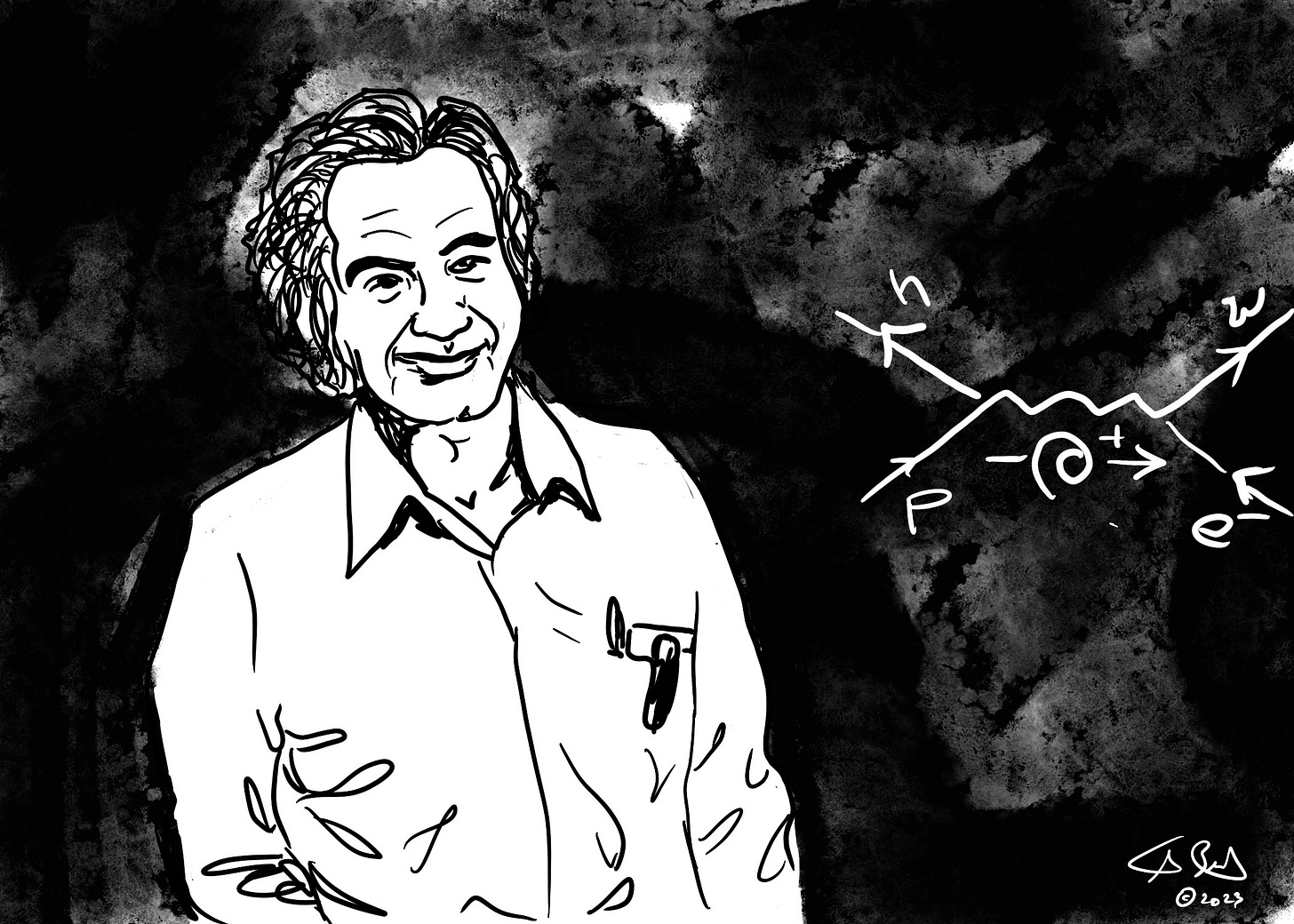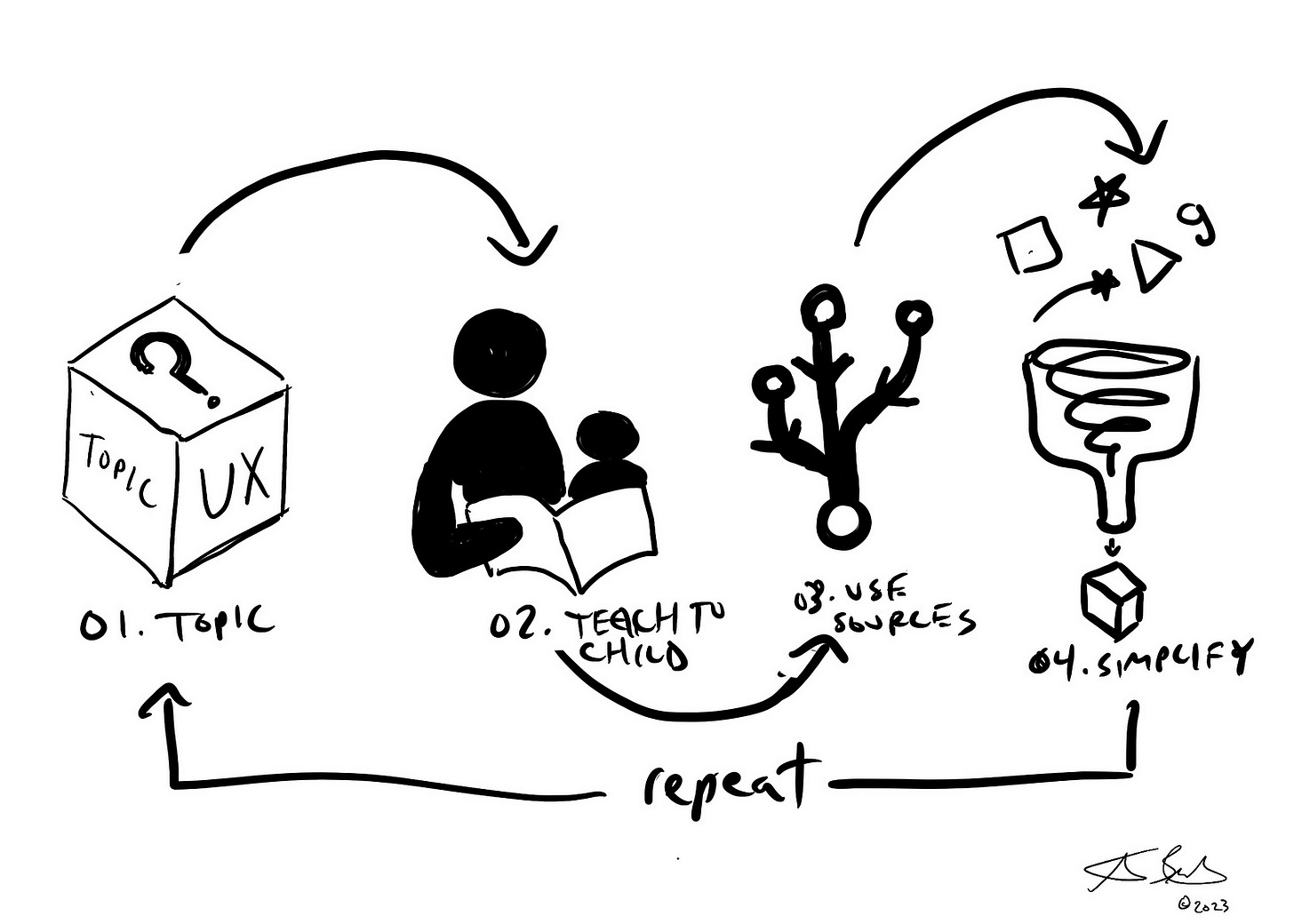If you are not familiar with Richard Feynman (1918–1988) American theoretical physicist and educator, I highly recommend Googling him, watching some of his lectures, and digging into his teaching techniques.
The Feynman Technique:
The 4 steps framework is quite simple.
Pick a topic to learn
Teach it to someone else (preferably a child)
Use source materials if you get stuck
Simplify any explanation through analogy
Hopefully, you recognize the Feynman Technique, and I prefer every UX Designer follow it both in their own practice as well as with their clients. Learning is a lifetime skill and UX designers need to learn in abundance to do their jobs well. Because the systems we solve problems for are constantly changing, we are expected to quickly be/become experts in any domain through learning.
“As I get older, I realize being wrong isn’t a bad thing like they teach you in school. It is an opportunity to learn something.” — Richard Feynman
I work with students and mentors and I like to use this sample.
Me: How much do you know about a lawn mower?
Student: Not much, besides that it cuts grass I suppose.
Me: If you go to work for John Deere as a UX designer how much do you have to know about a lawn mower?
Student: Let me guess…A lot.
Me: You are damn straight! John Deere is a global powerhouse for the agriculture business sector. An X9 Combine costs between 600K and 1 million dollars and they have sophisticated autonomous vehicle technology being implemented onto farms that are way ahead of our consumer vehicles. I met a UX designer from John Deere at a UXPA conference and he was on a team of 90+ UX designers our of Des Moines Iowa. My point is you don’t need to know about a lawn mower for the hell of it but you do need to show how you can learn about the complex systems that make up John Deere from their consumer lawnmowers to their global agriculture business.
Student: Ok ok I get it I will have to learn.
What does a learning framework have to do with UX? Great question. I will not sugarcoat it. You have to learn to be a UX designer. The world is far too complex and change happens too fast. You have two choices. You can continuously learn or you can become irrelevant.
(Psst….I hope you go with the first choice.)
How will the Feynman Technique help?
The learning/teaching technique is led by curiosity and as a UX designer, you should be fueled by curiosity. If you (1) pick a topic like “global agriculture” you quickly will be confronted with a complex system of farming techniques and technology that will require you to understand it through simple terms (2). You will likely need to learn about agriculture tech through documentation and learn many of the industry-based terms (3). As a UX designer, you have the opportunity to help a farmer using complex technology work to reduce their water usage ultimately feeding more people (4). A UX designer cannot arrive at a simple way to describe or communicate a solution for a farmer if they can’t learn about global agriculture deeply themselves, but with the use of the Feynman Technique, a UX Designer can work towards simplicity.
The Feynman Technique can help a UX designer stay in the “learner” mindset, which is key to solving problems in the first place. UX design can be so much fun and is made even more fun when UX designers are allowed to think, question, doubt systems, make mistakes, learn from them, and ultimately communicate their learnings.

If you find a UX designer unwilling to learn a new tool, explore a new way of thinking about a problem, or is too rigid about “the way” creativity can be applied then I will show you a “bad” UX designer, who is likely to think “they are right” and rarely seeks to validate, iterate, and learn about their solutions with their users. Don’t be this type of UX Designer. Keep learning!
I sincerely hope this finds you wherever you are and you dive into UX and the Feynman Technique.
Here are some other great Feynman resources.
https://twitter.com/ProfFeynman
Original Illustrations by Chris R. Becker using Figma + Procreate iPad App.
Chris Becker is an award-winning Sr. UX design consultant at Bttr, an Adjunct Professor at The Art Center College of Design, and an Author whose work includes solving problems with NASA/JPL, Apple, Netflix, LAUSD, Vulcan Production, Allergan Aesthetics, and others as well as the author of Learn Human-Computer Interaction. Chris holds an MFA in Media Design Practices from the Art Center College of Design. Views are my own.
Follow me @ Chris R Becker
Twitter: https://twitter.com/cbecker
Quora: https://www.quora.com/profile/Chris-R-Becker
My book — Learn Human-Computer Interaction
ADP list for mentor opportunities: https://adplist.org/mentors/chris-becker




